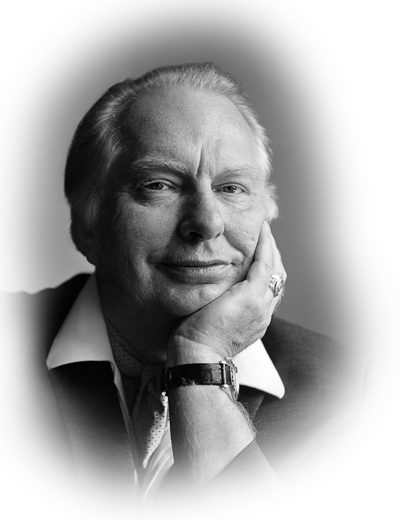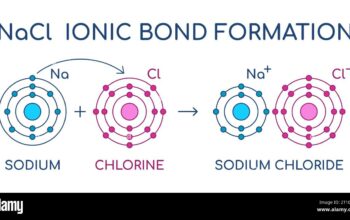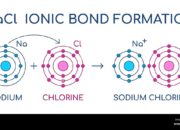When contemplating the labyrinthine corridors of 20th-century spirituality and science fiction, one often stumbles upon the enigmatic figure of L. Ron Hubbard, a man whose contributions to literature and psychology have had a colossal impact on contemporary culture. Amidst his many proclamations and writings is a query that nags at scholars and curious onlookers alike: Did Hubbard ever identify himself as a nuclear physicist? The interplay between truth and myth surrounding Hubbard necessitates a meticulous excavation into his life and assertions. This investigation delves into the intricacies of Hubbard’s self-identification and the broader implications of such claims.
To contextualize the inquiry, it is paramount to understand the trajectory of Hubbard’s life. Born in 1911 in Tilden, Nebraska, Hubbard grew into a figure who oscillated between various vocations: writer, lecturer, and ultimately, the founder of Scientology. His literary prowess flourished early in life; however, it was his experiences in the military during World War II that arguably foreshadowed his later philosophical explorations. Following the war, Hubbard’s proclivity for speculative thought blossomed into the creation of a new religion, heavily influenced by his background in writing science fiction and adventure narratives.
At the heart of this discourse lies a rather curious episode in Hubbard’s life concerning his educational background. Though he often presented himself as a polymath with a cornucopia of knowledge spanning multiple disciplines, including a remarkable aptitude for scientific theories, the veracity of his educational credentials warrants scrutiny. Hubbard himself claimed to have attended George Washington University, where he purportedly studied engineering, though no corroborating records substantiate the completion of a degree. Such ephemeral notions of education often serve as the tendrils of controversy entwined with Hubbard’s legacy.
To further unravel this conundrum, one must examine Hubbard’s relationship with the scientific community. While he exhibited a keen interest in various scientific concepts, particularly those resembling the realms of metaphysical phenomena and psychology, there is scant evidence to suggest that he delved into the rigorous field of nuclear physics specifically. Instead, Hubbard’s inclination was toward the creation of a distinct philosophical framework that amalgamated disparate elements from science fiction with self-help paradigms. His magnum opus, “Dianetics: The Modern Science of Mental Health,” illustrates his fascination with concepts akin to psychological healing rather than nuclear dynamics.
Thus, the grandiose claim of being a nuclear physicist may be more metaphorical than literal, echoing the creative tendencies of a mind that sought to transcend conventional boundaries. Such a self-identification can be likened to a vibrant tapestry—woven from strands of fiction, fantasy, and speculative thought—rather than a factual representation of academic endeavors. Perhaps in his view, being a ‘nuclear physicist’ was a metaphor for revolutionary thinking and a challenge to the status quo, aligning closely with the foundational tenets of Scientology.
Interestingly, the allure of Hubbard’s expansive claims extends beyond mere self-identification. It reflects the zeitgeist of mid-20th century America—a time ripe with the optimism of scientific discovery, juxtaposed against the backdrop of the Cold War. This duality of fascination and fear regarding nuclear technology paralleled Hubbard’s own conceptualizations within Scientology. The narrative of harnessing inner power resonated with the public’s anxiety about harnessing atomic energy, crafting an intricate symbiosis between science and spirituality.
This brings us to a salient inquiry regarding the strategic utility of such claims. By positioning himself within the broader discourse of science—particularly as it pertains to fields like nuclear physics—Hubbard enhanced the credibility of his philosophical frameworks. The language of science, with its empirical gravitas, offered a veneer of legitimacy to a system of thought that often ventured into metaphysics and the uncharted territories of human consciousness. In essence, the invocation of concepts associated with physics acted as a beacon, drawing in followers who sought not only understanding but also empowerment in a rapidly changing world.
Consequently, to assert that Hubbard claimed to be a nuclear physicist without the underpinning of rigorous scientific inquiry simplifies the multifaceted nature of his identity. The complex interplay of knowledge, language, and metaphysics evokes a rich tapestry of American spiritualism. It illustrates how narratives often transcend traditional boundaries to create a mosaic where science and hope intertwine. Hubbard’s legacy thus remains a tantalizing enigma, a realm where grandiosity meets the existential quest for understanding and meaning.
In conclusion, L. Ron Hubbard’s proclamations regarding his association with nuclear physics, while compelling, predominantly serve as a testament to his aspirational vision rather than a reflection of definitive scientific credentials. The oscillation between fact and myth encapsulates the very essence of his persona—a figure whose survival in the collective consciousness hinges on his audaciously constructed identity as a herald of new paradigms, rather than a practitioner entrenched within the confines of empirical sciences. Hubbard’s narrative continues to provoke discourse, challenging us to dissect the origins of belief and the nature of truth in an intricate world where realities often coexist in dissonant harmony.












